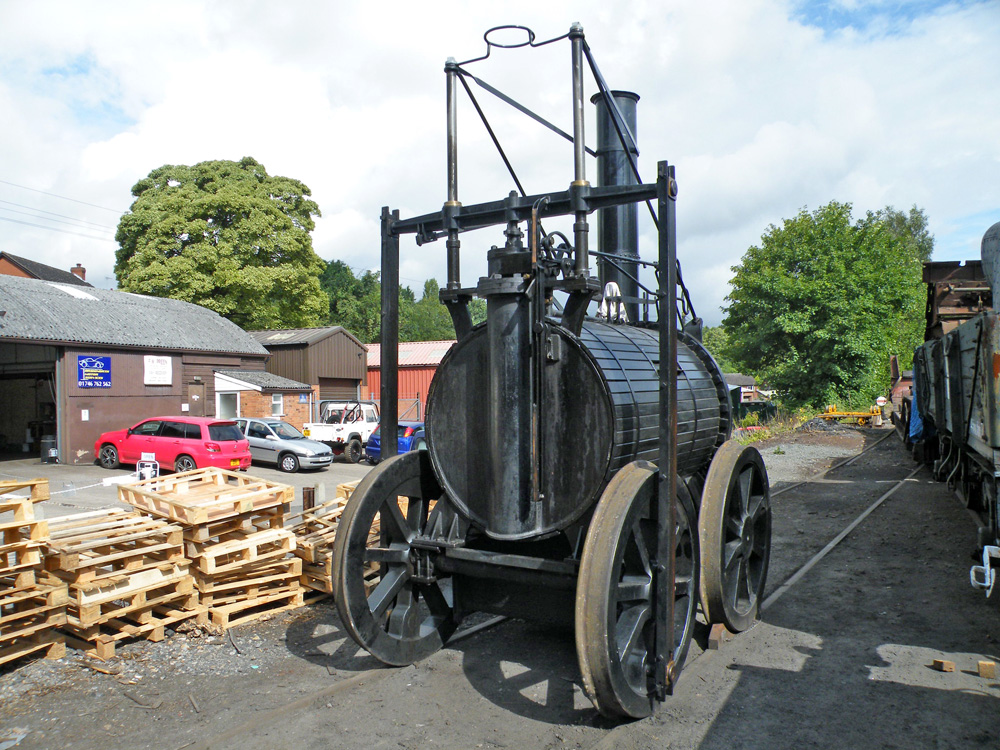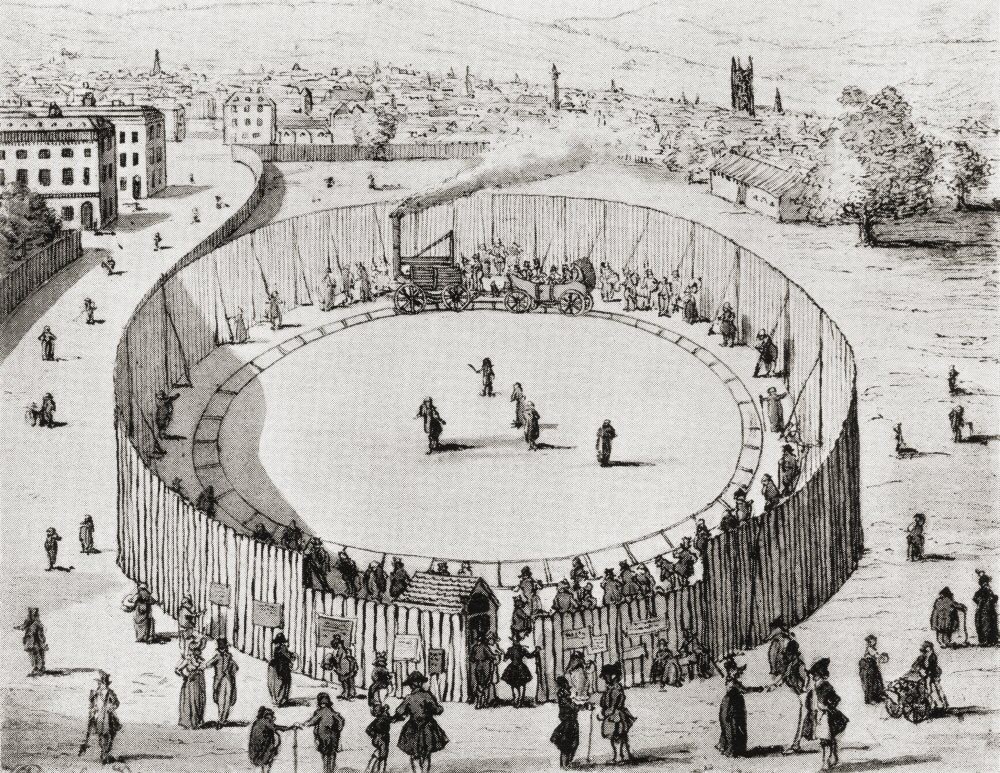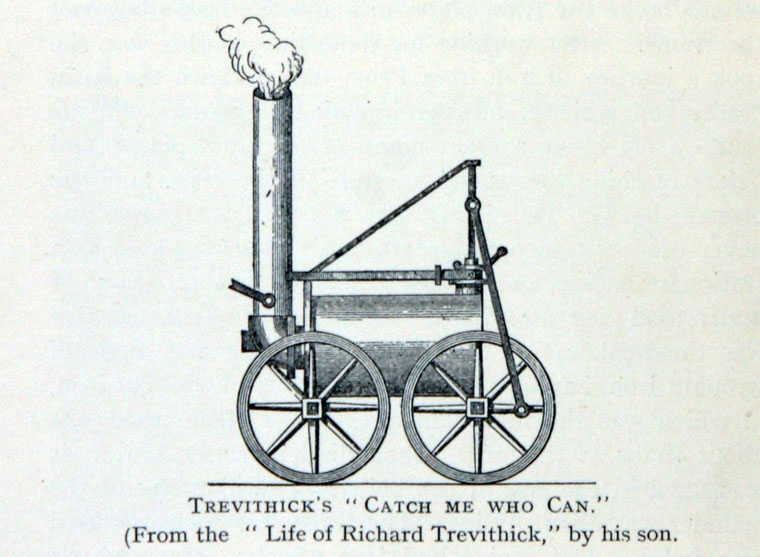Twenty five years before Robert Stephenson decisively proved the superiority of steam locomotives over horse drawn carriages during the Rainhill Trials, a British inventor named Richard Trevithick built the first full-scale working railway steam locomotive. He used his locomotive to haul the first ever passengers over a distance of 10 miles in Merthyr Tydfil, Wales.

A replica of Richard Trevithick’s last locomotive, Catch Me Who Can, in Bridgenorth.
Richard Trevithick was a pioneer of the steam engine. His most significant contribution was the development of the first high-pressure steam engine. Before that, steam engines used low pressure steam that was condensed under a piston within a cylinder to create a partial vacuum. The pressure difference created by the vacuum drove the piston and thus the engine. Trevithick’s idea was to use steam at high pressure and the expansive power of the steam drove the pistons. This design allowed for more powerful steam engines to be built that were also small enough to be put on wheels, and the first steam locomotive was born.
But James Watt, the Scottish engineer who gets all the credit for “inventing” the steam engine and spearheading the Industrial Revolution in Europe, had a monopoly on steam engines and a patent that prevented others from experimenting with new ideas. Once Watt's patent expired in 1800, Richard Trevithick started building high-pressure steam engines. His first steam locomotive was meant to be used on road. He named it Puffing Devil and on the Christmas Eve of 1801, he drove his steam-powered car up Fore Street and then over Camborne Hill, in Camborne, and to the nearby village of Beacon, carrying six passengers. This was the first demonstration of transportation powered by steam.

Three years later, Trevithick built another locomotive, this time to be used on rails. Amid great fanfare, on 21 February 1804, the locomotive left Penydarren with 10 tons of iron, 5 wagons and 70 men and arrived at Abercynon, a distance of nearly ten miles in 4 hours and 5 minutes, at an average speed of 2.5 miles per hour. This was the first railway journey.
In order to drum up interest on rail travel, Trevithick came to London in 1808 and set up a demonstration railway. It was a circular track about 30 meters in diameter on which ran a locomotive pulling a number of carriages, like in a fair ride. In spite of the publicity he sought for steam locomotives, Trevithick constructed a high wooden fence around the track concealing it from view to all but those who paid to enter. Trevithick called it the Steam Circus.

Trevithick designed a completely new locomotive for the demonstration which he named Catch Me Who Can. Unfortunately, the soft ground over which the tracks were laid kept sinking as the 8-ton locomotive passed over, breaking the brittle cast iron rails and eventually derailing his enterprise. Lack of patronage and diminishing public interest disheartened Trevithick. In frustration, Trevithick stopped making locomotives and focused his energies into making stationary steam engines instead. He made steam engines to drive industrial machineries such as stone crushers, rolling mills, forge hammers, and blast furnace blowers. He also built a barge powered by paddle wheels and several dredgers.
Trevithick continued to experiment but found it difficult to find financial backing and make money from his inventions. He died penniless in a hotel room after being taken ill with pneumonia. He spent the last week of his life alone in bed with no relatives or friends to attend to him during his illness. One of his colleagues raised money and gave Trevithick a funeral. But Trevithick was buried in an unmarked grave, and when the cemetery closed some twenty years later and the gravestones were removed, his gravesite was lost for ever. More than a century later, a plaque was added to St Edmund's Burial Ground in Dartford marking the approximate spot where he is believed to lie buried.

No comments:
Post a Comment